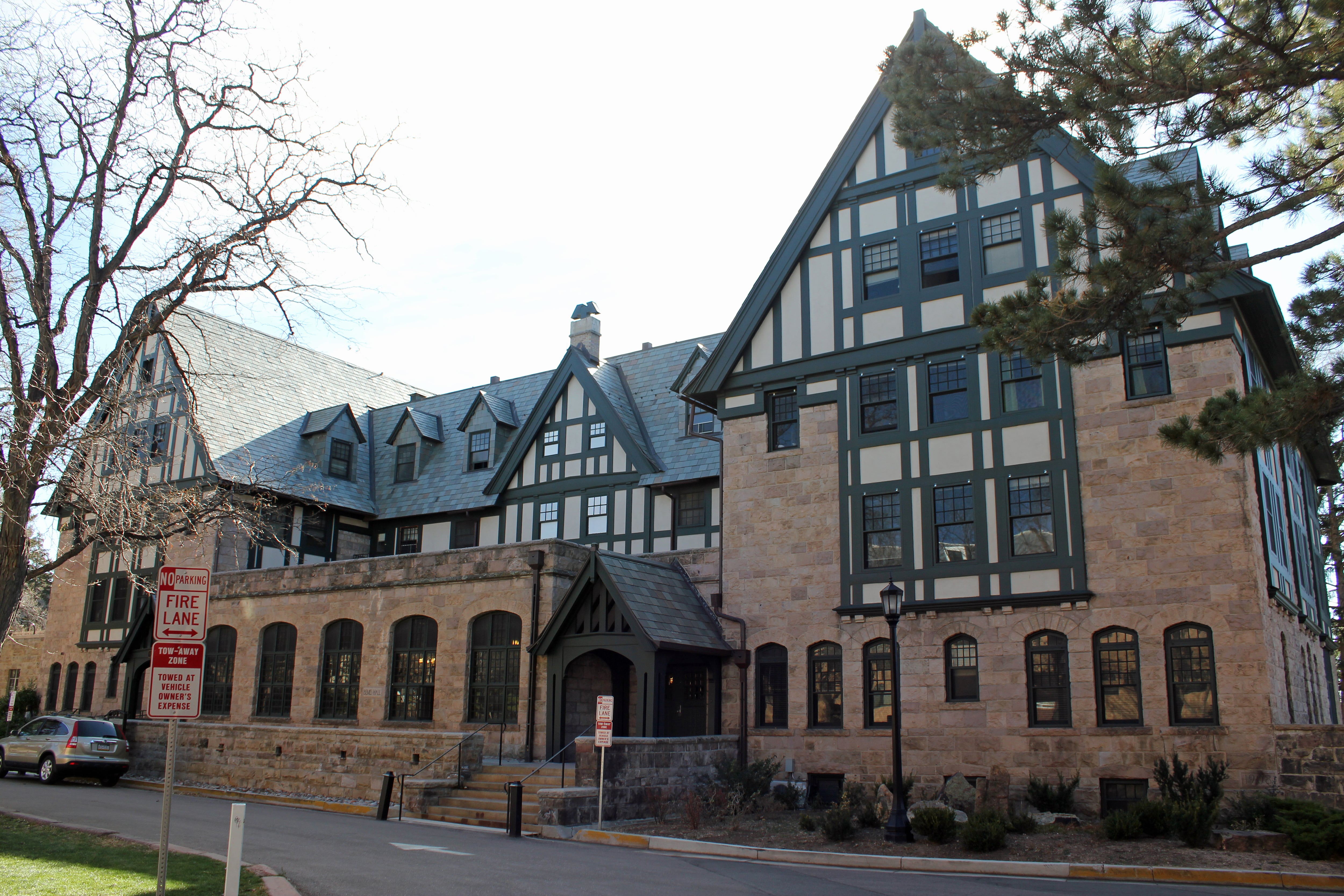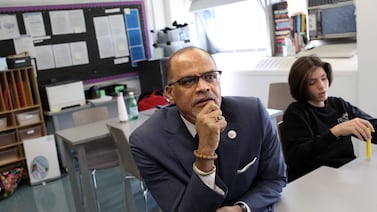Sign up for our free monthly newsletter Beyond High School to keep up with news about college and career paths for Colorado high school grads.
Colorado’s colleges and universities will no longer be allowed to consider race when admitting students, after the nation’s high court ruled Thursday that admissions programs at Harvard University and the University of North Carolina are unconstitutional.
Only a few Colorado schools factor race into their admissions decisions, including the University of Colorado Boulder, Colorado College, and the University of Denver.
The Supreme Court decision to halt 45 years of colleges’ use of race-conscious admissions could reshape campuses here and nationwide.
The decision means the state’s most selective schools won’t be able to consider racial diversity as a factor in enrollment, which could limit the tools they use to balance their student bodies to be more reflective of states and the nation. It also could discourage students from applying to college and deter university officials from addressing racial inequities on campus, according to experts.
Native American, Black, and Hispanic students enroll in college at lower rates than their white and Asian peers.
Ben Ralston, Sachs Foundation president, said race-based admissions were created to rectify systemic inequities that had erected barriers to Black students and students of color. The Colorado Springs-based foundation supports Colorado’s Black communities, including by offering college scholarships.
“The fact that the federal government is saying that historic inequity is something that they no longer want to address is just a clear signal to the students that we serve that those inequities are going to continue to persist throughout the course of their education and probably the rest of their lives,” Ralston said.
President Joe Biden said the ruling should not deter colleges from seeking to improve diversity. University administrators in Colorado said that they are working to understand how the ruling will affect their admissions processes and that they’ll keep working to admit students from a range of backgrounds. That includes putting more weight on students’ personal experiences and removing barriers in the application process.
“Excellence is not defined by a test score, so this will force us to define excellence even better,” said Shanta Zimmer, senior associate dean for education at the University of Colorado School of Medicine.
Most Colorado colleges don’t consider applicants’ race
The majority of Colorado’s public universities and community colleges do not consider race in their admissions decisions. Students of color go to those schools at higher rates than more selective schools but typically have fewer resources. That contributes to lower overall graduation rates.
Selective colleges typically have more financial and student support resources that help students of color graduate at higher rates.
In admissions, selective colleges in Colorado largely consider the rigor of classes taken in high school, grade point average, application essays, recommendations, and geographic location. Colorado’s public schools do not consider scores from standardized tests like the ACT and SAT, but some private colleges do.
CU Boulder, Colorado College, the University of Denver, and the U.S. Air Force Academy treat academic performance and rigor as the most important factors in deciding whether to accept a student, but they do consider race as well.
The high court’s decision exempted military academies, on the premise that they are not party to the case and have “potentially distinct interests” that were not considered in the court cases. In her dissent, Justice Sonia Sotomayor called that distinction essentially arbitrary and said it shows that even the majority doesn’t believe the 14th Amendment prohibits all use of race in admissions.
CU Boulder, the state’s flagship institution, is the only Colorado state university that considers race in admissions. Public universities in the state have tried to be more representative of the state’s residents — and, in turn, taxpayers who help pay for their operations.
CU Boulder is 65% white, 13% Hispanic, and 2% Black, according to the Integrated Postsecondary Education Data System. In contrast, Colorado’s K-12 population is just 51% white, 35% Hispanic, and 4.6% Black. The school has become slightly more demographically diverse in the last decade. The student population also has grown, and the school is admitting and serving more students who are Black and Hispanic.
In a statement, University of Colorado President Todd Saliman and Philip DiStefano, chancellor of CU Boulder, said the university would continue to use admissions processes that consider “the whole student,” including demographic characteristics and life experiences.
“As we move forward, the University of Colorado will continue to advance our commitment to diversity, equity, and inclusion,” they said. “We are steadfast in our belief that a vibrant and inclusive community leads to a richer educational experience for all, contributes to a positive society, and prepares our graduates to excel in an increasingly interconnected and diverse world.”
Jennifer McDuffie, CU’s associate vice chancellor of enrollment management, said the university plans an audit of all its admissions practices and staff trainings to figure out what needs to change in response to the ruling. At the same time, CU is looking at what barriers it can reduce in admissions, which may mean expanding financial aid or removing extra essays from its application process. The university also wants to ensure students from diverse backgrounds feel wanted and welcome, McDuffie said.
University of Denver Chancellor Jeremy Haefner said in a statement that his institution would continue to work to build a more diverse study body, for example by prioritizing diverse high schools in its recruitment efforts and working to create a more welcoming campus environment.
“Without question, there is much to learn about how this decision will impact admission processes at the undergraduate and graduate level,” he said. “Legal professionals will apply their expertise to interpreting the decision over the coming days and weeks, and we will make the best choices for DU’s commitment to diversity and our students while complying with the legal landscape.”
Colleges’ argument relied on stereotypes, court’s opinion says
The Supreme Court decision stems from two cases that were brought by Students for Fair Admissions, an organization headed by Edward Blum, who has spent years fighting admissions policies that consider race.
The group alleged that the race-conscious admissions policies of Harvard and the University of North Carolina are unfair and discriminate against Asian American applicants, among other allegations.
The universities said they needed to take race into account to build a diverse student body, which brings benefits to the schools and students.
In a 6-3 opinion written by Chief Justice John Roberts, the court ruled that argument relied on stereotypes about how people of different races and ethnicities think and behave. The majority opinion argues that using race as a factor in admissions inevitably harms groups that aren’t favored by the policy.
“Excellence is not defined by a test score, so this will force us to define excellence even better.”
“College admissions are zero-sum, and a benefit provided to some applicants but not to others necessarily advantages the former at the expense of the latter,” Roberts wrote.
Opponents of the use of race-based admissions had argued that Asian American applicants are harmed by the practice.
But the decision also will have an impact on the Asian American community, said Jennifer Ho, a University of Colorado Boulder professor. While Asian Americans are highlighted in the case, they have a mixed view on affirmative action and using race in admissions, according to a Pew Research Center study.
While some Asian American communities are highly educated, many struggle to get to college, such as Hmong, Laotian, and Cambodian students, and those from Myanmar, Ho said.
“Asian American students who are from Southeast Asian groups are vastly underrepresented in colleges and universities and have some of the lowest graduation rates from high school by percentage,” said Ho, a professor of Asian American studies.
Many Asian Americans have also benefited from race-based admissions policies, Ho said, including herself.
“My guess is that some of the parents who are driving the narrative that affirmative action is harming their children have actually been the beneficiary of affirmative action policies,” she said.
Less diversity makes college feel less welcoming
The last time the Supreme Court took up affirmative action was in 2016, when it upheld that colleges and universities can use race in admissions. The makeup of the court has since shifted to a more conservative majority.
Data from states that previously banned the use of race in admissions provide a look at what may happen nationwide.
After California and Michigan banned the use of race in admissions, the share of Black, Latino, and Indigenous students at several of the most selective universities fell sharply. Those figures tended to tick back up with time, but never fully rebounded — and they still fail to represent the racial diversity of high school graduates in those states, the Boston Globe reported.
When colleges become less racially diverse, students of color often feel the schools are less welcoming — which could discourage Black and Latino students from applying or staying in college. That matters because Black and Latino students are more likely to benefit from the social capital that comes from attending a top college.
Ralston said more of his students have chosen to go to historically Black colleges and universities because some schools have felt like less of a place for them. He expects that portion to increase as students feel less inclined to consider a school that’s less diverse.
Experts nationwide say it’s hard to boost admissions of Black, Hispanic, and other underrepresented students without considering race. Some people worry the ruling will discourage universities from even trying, for fear of running afoul of the ruling.
Kelly Slay, an assistant professor at Vanderbilt University, said states could consider sending more resources to colleges that serve higher numbers of students of color. CU Boulder’s Ho said that schools could also try to diversify their student bodies by considering the economic background of students or whether they’re the first in their family in the United States to attend college.
Advocate Satra Taylor said she hopes foundations will step up scholarship offers to get students of color to college.
“No matter what, we’re going to have to be proactive,” said Taylor, higher education director of Young Invincibles, which works on promoting student voice in policy debates, “and we’re going to have to ensure that we’re creating equitable access pathways for students from marginalized backgrounds.”
Colorado universities to give more weight to personal experiences
Administrators at the University of Colorado said they are committed to just that. McDuffie pointed to recent initiatives such as a partnership with the Southern Ute Indian Tribe that provides free tuition to some tribe members and a program that pays for travel and lodging for students and families from Colorado’s rural San Luis Valley to visit campus.
CU is doubling the number of students eligible for its CU Promise Program, which waives tuition for students whose families earn less than $65,000 a year. The extra financial aid will be paid for in part by admitting more out-of-state students. CU also plans to reduce extra essays not already required by the CommonApp, continue diversifying its recruiters, and do more outreach in communities that historically don’t send a lot of students to the university, McDuffie said.
Zimmer said she believes the court ruling relies on a mistaken idea about merit. With more than 10,000 applicants for just 184 spots, the school has always looked at test scores to ensure students are academically prepared. But simply ranking applicants by their MCAT scores wouldn’t produce the best medical school class — or the best doctors, she said.
In the future, the medical school likely will give more weight to essays and responses to questions about past experiences, advocacy work, and personal attributes, Zimmer said.
Relevant information could include whether applicants speak another language, whether they’ve had to seek primary care in an emergency room or been pulled over by the police without cause, whether they are the first in their family to go to college, or whether they have worked with community groups to improve health outcomes for marginalized communities.
Given the correlation between diverse health care providers and patient health outcomes, admitting diverse medical students is “not just about what the class looks like,” Zimmer said. “It’s about how patients get healthy and how they survive, literally.”
Kayln Belsha and Erica Meltzer contributed reporting to this article.
Jason Gonzales is a reporter covering higher education and the Colorado legislature. Chalkbeat Colorado partners with Open Campus on higher education coverage. Contact Jason at jgonzales@chalkbeat.org.








